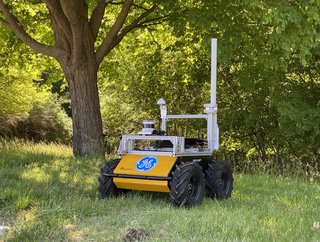GE Autonomous Robot ‘ATVer’ Crosses Terrain in US Army Demo

General Electric’s (GE) Research Lab team, led by Senior Robotics Scientist, Shiraj Sen, have successfully completed Year 1 of a project with the US Army through its Scalable Adaptive Resilient Autonomy Programme (SARA) to develop and demonstrate a risk-aware autonomous ground vehicle that was capable of navigating safely in complex off-road test conditions.
The autonomous robot “ATVer” successfully navigates on its own through unstructured environments, including forests and heavily wooded areas. Sen explained how one of the biggest challenges with autonomous systems is overcoming risk factors, especially when it involved equipment for military operations.
“With the successful demonstration of our ‘risk-aware’ autonomous ground vehicle in our project with the Army, we’ve made progress in removing some of those risks and hopefully, provided a clearer path to more autonomous systems applications further down the road … or off-road,” he added.
“In future Army scenarios, autonomous systems will have to reliably plan in the presence of challenging features they encounter while maneuvering in complex terrain,” Eric Spero, SARA Programme Manager said. “Incorporating risk and uncertainty into the autonomy decision-making process enables our testbed platforms to show us what it looks like to plan a direct path instead of taking the long way around.”
Using AI to take an algorithmic approach
A key factor in enabling the breakthrough in addressing risk was the integration of GE’s Humble AI technology, according to Sen. Humble AI is an algorithmic approach developed by GE artificial intelligence (AI) scientists that is capable of taking a step back and assessing much like a human might do when it encounters an uncertain situation.
GE scientists have already field-tested its Humble AI algorithms to safely optimise the control of wind turbines to maximise energy input. In the case of wind turbines, the Humble AI operates within a zone of competency where it bases its decisions on known operating scenarios with which it is familiar. When it encounters a scenario it has never seen, it is designed to take a step back and relinquish control of the turbine into a default safe mode.
“Our project and partnership with the US Army has really enabled us to make some important advances in autonomous systems,” Sen said. “We believe the advances made on this project will not only help accelerate the deployment of future driver-less vehicle technologies; they will help encourage more autonomous solutions in other industry sectors like energy, aviation and healthcare that people depend on every day.”
GE’s project was one of eight funded by the U.S. Army’s Combat Capabilities Development Command Army Research Laboratory to advance autonomous, off-road navigation capabilities for military ground vehicles.
(Image: GE Research)
- Top 100 Women 2024: Robyn Denholm, Tesla - No. 8AI & Machine Learning
- Top 100 Women 2024: Safra Catz, Oracle - No. 7Digital Transformation
- Advancing AI in Retail with Pick N Pay's Leon Van NiekerkAI & Machine Learning
- OpenText’s Muhi Majzoub: Engineering Platform Growth with AIEnterprise IT






